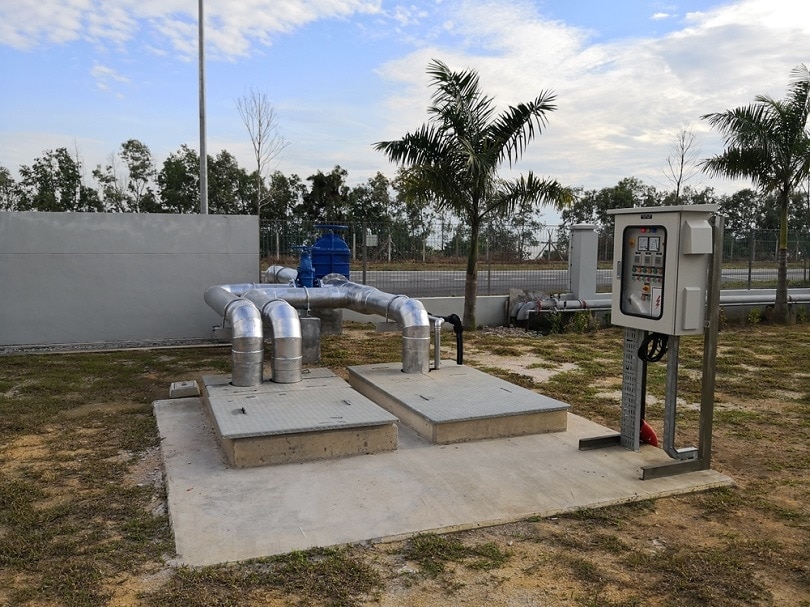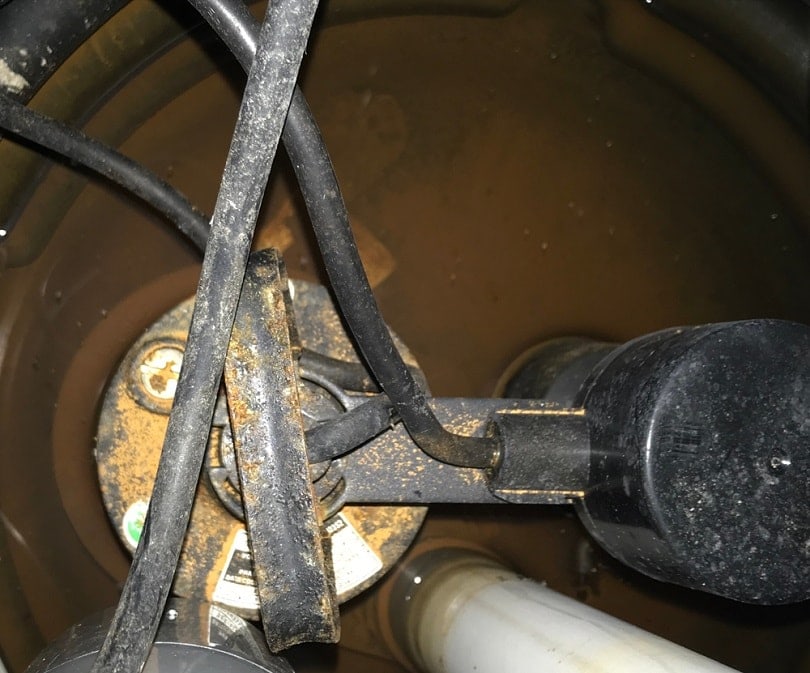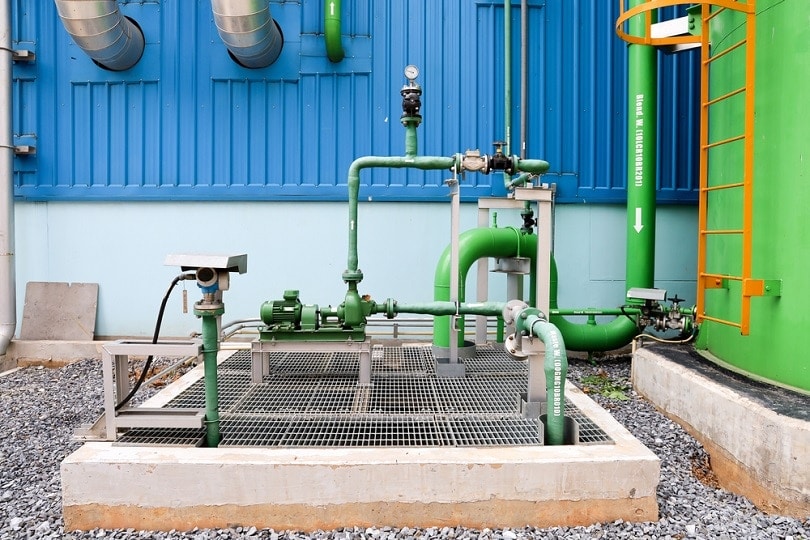Should There Be Water in Your Sump Pump Pit? What You Need To Know!
-

- Last updated:


If you have a sump pump pit in your basement with water in it and you’re wondering if that’s okay, the short answer is yes. Your sump pump pit is supposed to fill with water, and it’s perfectly normal to have some water in it. However, we’ll discuss the topic further before you dismiss it entirely.
What Does a Sump Pump Pit Do?
It may not appear this way while standing in it, but if your basement has a sump pump pit, the floor is angled slightly so that any water entering the basement will make its way to the sump pump pit. The angled floor prevents water from becoming stagnant in other parts of the basement and makes removing it easier.
What Is a Sump Pump?
There are two types of sump pumps: submersible and pedestal. As you may have guessed, submersible pumps go in the water, while pedestal pumps keep the motor on a pedestal outside the water. Both turn on when they detect water and pump it through a hose outside the home.
Most people go with the submersible type, which we recommend because it’s quieter and more powerful. However, it’s more likely to be hardwired to a circuit breaker. Pedestal pumps can use an extension cord and are cheaper, don’t need to fit into the pit, and use less power, but they are also noisy and have less power to move water.
This two-part system of pump and pit is extremely effective at keeping your basement dry even if the home sits in an area that causes it to collect a lot of water. Many times, people will install a sump pump pit if they cannot keep the basement dry, but this could require digging out the flooring to create the pit and create the slanted floor. However, you might only need to dig a pit if water accumulates in one spot.

How Large Is a Sump Pump Pit?
A sump pump can be any size, but they are usually 18–24 inches wide and about 30 inches deep, which allows the pit to collect 30–35 gallons of water. Homes on top of a hill might not collect much water and have smaller pits than a house by the river or below the water level in the surrounding area. Modern pumps are more powerful and can remove water faster than traditional pumps. They also use a smaller pit.
Should the Sump Pump Pit be Dry?
Yes, a sump pump pit with no water is good news, and it means your basement is not collecting any water. A dry sump pump pit is concerning only if there is water in other parts of your basement. Water not entering the pit means the floor is not angled correctly, or that water is entering in an unexpected way, meaning you might need to dig another sump pump pit.
If the sump pump pit is always dry, it’s a good idea to test the pump every season or two to ensure it still works when needed. Electronic components have a way of going bad over time, and you don’t want to get a sudden flood and find out the pump has a problem. It’s easier to notice a pump slowing down and wearing out when it’s always working.
Should There Be a Few Inches of Water in the Sump Pump Pit?
Yes, as we’ve mentioned, the pit is there to collect water. Most sumps will not turn on until there is an inch or two (maybe more) of water in the pit, and it will often shut off when about that much remains, so it’s very common to see some water in the bottom of the pit with the pump off.

What if There Are Several Inches of Water in the Sump Pump Pit?
Pump Not Turning On
A full sump pump pit or one with several inches of water is not functioning correctly. If it hasn’t been raining, but your pit has a lot of water, and the pump isn’t running, it likely means there is a problem with the sump pump.
We recommend adding a few more gallons of water to see if it turns on; the automatic switch could be worn out, or it may not turn on until the water is unexpectedly high. We’ve seen some brands take a long time to switch on. However, if the pit is full and there is no action from the pump, you need to replace it.
The Pump Is Running But Not Pumping Water
If your pump is turning on but not removing any water, it could be a clog in the line leading away from the pump. You’ll need to free the obstruction or replace the line. If you replace the hose and it doesn’t fix it, you will need to replace the pump.
The Pump Is Working But The Pit Is Still Filling
If you can see the pump working, but your pit is still filling with water, your pump is too small. If you have just received heavy rains or a hurricane and notice the pit overflowing while the pump is running, it will likely take a little longer to remove the excess water and be fine. However, if it floods the pit every time it rains, you must get a stronger pump to protect your basement.
There Is Water In My Basement But It’s Not Raining
If there is a lot of water in your basement during nice weather, the most likely explanation is that your basement sits below the waterline, and you will hear your pump kick on every few days, regardless of the weather.
In a home that sits below the waterline, you can expect water to enter the basement, and it’s probably why your sump pump pit is there. However, if this extra water is sudden, it could result from a water line break nearby, and you should check with your neighbors and the local water company to find the source.
Summary
Having no water in your sump pump pit is great, but it’s supposed to hold water, and if you see a few inches in there, it’s perfectly alright. The only time you should be concerned is if it’s full and your pump doesn’t seem to be doing anything about it. If you feel like the pump is running all the time and is too slow to remove the water, getting a larger pump will speed up the process and remove the water quicker.
We hope you have enjoyed reading and feel a little more comfortable about the water you see or don’t see in your basement. If we have helped you, please share this guide to water in your sump pump pit on Facebook and Twitter.
Featured Image Credit: Hotcoffeeong, Shutterstock
Contents



